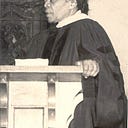History 101: Rosenwald Schools
In this series, History 101, we’ll explore some of the topics and questions we frequently discuss at the Charlotte Hawkins Brown Museum.
From the 1910s until the 1930s, Rosenwald schools dotted the rural South. These schools were vast improvements over the basic education available for African Americans at the time. More than 5300 buildings were constructed in rural African American communities to provide educational opportunities during Segregation, allowing increased access to better quality education for students until the 8th grade. By 1928, nearly one in five rural Southern schools was a Rosenwald school. While Rosenwald schools offered an improvement, the separate and unequal society of Jim Crow still resulted in deep racial disparities in resources between white and black students.
Conceptualized by Tuskegee Institute founder Booker T. Washington and funded by Sears, Roebuck and Company President Julius Rosenwald, the program provided grant money to build community public schools for African American youth otherwise lacking consistent access to education. An active philanthropist, Rosenwald served on Tuskegee’s board and was impressed with Washington’s work and inspiring message of “self-uplift.” Financial aid from the Rosenwald Fund often subsidized only fifteen to twenty percent of a building’s total cost. To cover the balance, monies from local and state education departments, as well as white communities (a requirement of aid from the fund) were used. This private-public partnership was novel for the time.
North Carolina housed more Rosenwald schools than any other state, totaling 817 in 93 of the state’s counties by the program’s conclusion in 1932. Most school continued operating until 1954, when the landmark U.S. Supreme Court decision in Brown v. Board of Education ruled against legally enforced school segregation by race. Rosenwald schools were typically one to two room buildings, simplistic in nature. In some cases, however, funds could be secured for larger, more modern buildings.
Historian Tom Hanchett said: “Today we assume education is the function of the government. The time when this was coming to be was the early 1900s. Because of institutionalized racism in the South, African Americans were not getting their fair share of this new government education. Here is a coalition of blacks and whites, outside of the government, who figure out how to deliver 5,000 school buildings. Rosenwald schools are one of the most amazing stories in the American history of education.”
Today, former Rosenwald school buildings still stand across the rural South. These Progressive Era symbols of philanthropy are in danger, however. Many are dilapidated and in danger of falling down. State and local preservation groups, such as the National Trust for Historic Preservation, continue to work to help preserve these beacons of African American education history.
